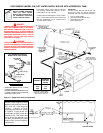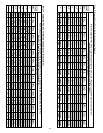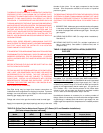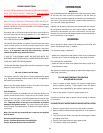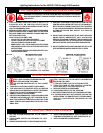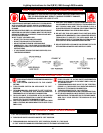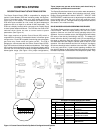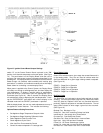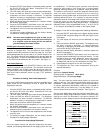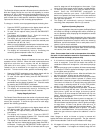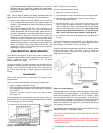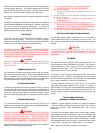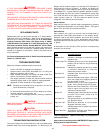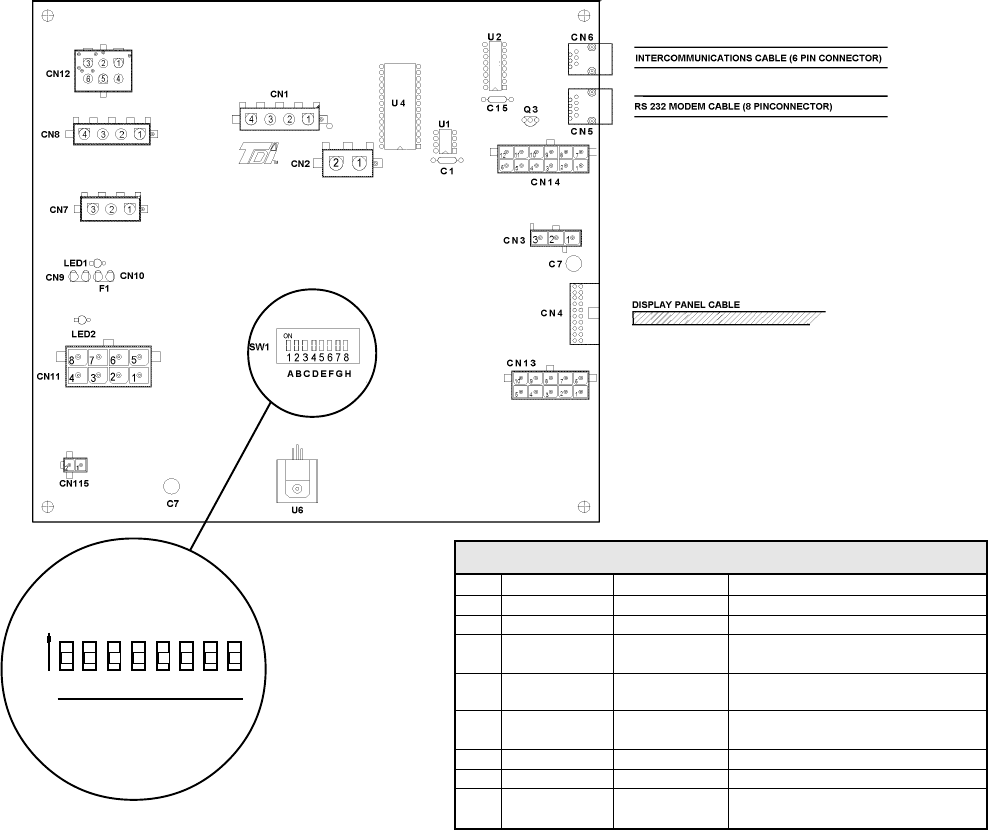
26
CONTROL SYSTEM
DESCRIPTION OF MULTI-STAGE FIRING SYSTEM
The Central Control Board (CCB) is responsible for staging the
Ignition Control Boards (ICB) and monitoring safety limit devices,
control of circulation pump, power vent, alarm output and IRI gas
valves (only on IRI models). The thermostat also resides on the
CCB with inputs available for inlet, outlet and tank temperature
probes as well as an input for a remote 24 VAC thermostat. The
CCB has a display interface which connects to the Display Board
to show system status and failures. The CCB also has a set of DIP
switches which allows the user to control several system
parameters. (See Figure 14.)
Each stage requires an Ignition Control Board (ICB) which is
responsible for controlling a combustion blower, hot surface igniter
and gas valve. Each ICB is capable of monitoring gas valve power,
gas valve relay, flame sense and igniter current. The ICB is
designed to communicate with the Central Control Board (CCB).
Each ICB consists of identical hardware and software. Each stage
ICB is made unique through the use of circuit board jumpers which
allow the user to control such variables as stage identification and
blower/igniter usage. (See Figure 15 for jumper configurations.)
These jumpers are pre-set at the factory and should only be
adjusted by a qualified service technician.
The Display Board allows the end user to monitor water temperature,
set-points, differentials, options, fault indications and error codes.
Display Board pushbuttons labeled "ADJUST", "SELECT" AND
"ENTER/RESET" enable the user to adjust set-points, differentials,
post-circulate time, reset the cycle count and reset the control
system during lock-out. Changes made to programmable features
are stored in non-volatile memory.
DIA-SCAN II DISPLAY BOARD OPERATING PROCEDURES
The Display Board provides a user-friendly interface to the Central
Control Board. With the Display Board, the user can control
appliance functions and view the overall operating status of the
appliance. If an error condition occurs, the Display Board will indicate
the nature of the fault by illuminating a red LED. The display will
further define the fault by illuminating a red LED corresponding to
the stage on which the fault has occurred. Red and green LEDs
are associated with each stage to indicate either a fault or normal
operation. If the fault continues until the unit "locks out", the display
will show a three digit code in addition to the red LEDs. (See Table
19 for error code chart.) Under normal operating conditions, the
four digit LED display on the Display Board will continuously illustrate
the water temperature sensed at the inlet temperature probe. If dip
Figure 14. Central Control Board's Dip Switch Configuration and Options
ON
SW1
1 2 3 4 5 6 7 8
AHFEDCBG
DIP SWITCH CONFIGURATION TABLE
SW1 OFF ON SELECTION:
A 3 STAGE 4 STAGE EITHER 3 OR 4 STAGE SYSTEM
B 3 TRIALS 1 TRIAL EITHER 3 OR 1
C NO IRI IRI WHETHER SYSTEM IS IRI OR
GAS VALVE GAS VALVE STANDARD
D INLET TANK INLET OR TANK AS
CONTROLLING PROBE
E NO EXTERNAL EXTERNAL WHETHER EXTERNAL
THERMOSTAT THERMOSTAT THERMOSTAT IS USED
F OUTLET 210°F OUTLET 240°F OUTLET MAXIMUM TEMPERATURE
G 190°F 220°F MAX. SET-POINT TEMPERATURE
H DEGREES °F DEGREES °C EITHER °F OR °C FOR DISPLAYED
TEMPERATURE



